1991
VDB-1000
Data Bank watch with touchscreen
The first in the Data Bank line with a touchscreen, this watch allowed users to operate its various functions with just a fingertip. In fact, to emphasize that everything could be done on the screen, the designers provided no buttons or crown. The large, full-screen dot-matrix LCD displayed graphics including a world map, as well as letters, numbers, and Japanese katakana characters. Boasting the Casio Telememo function to help users keep track of calendar entries, addresses, and more, this watch was full of user-friendly perks, including world time.

















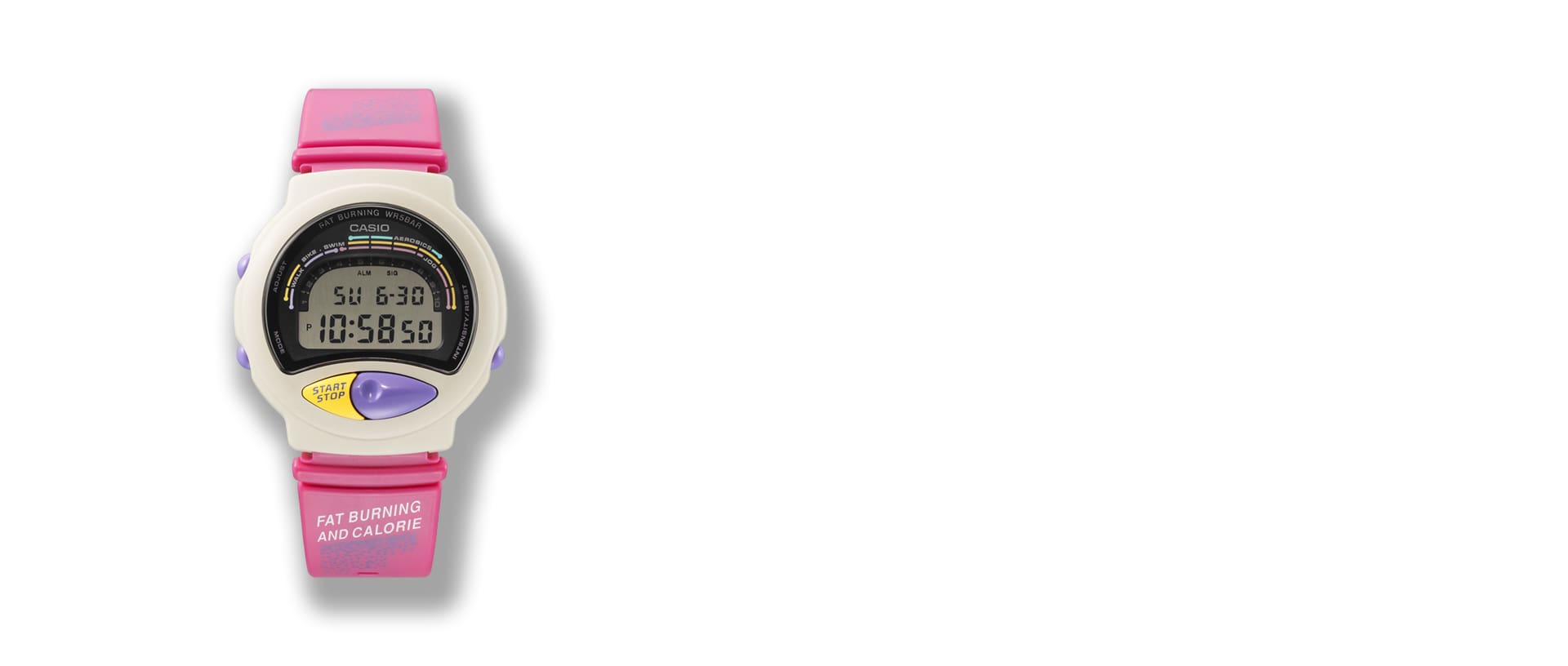





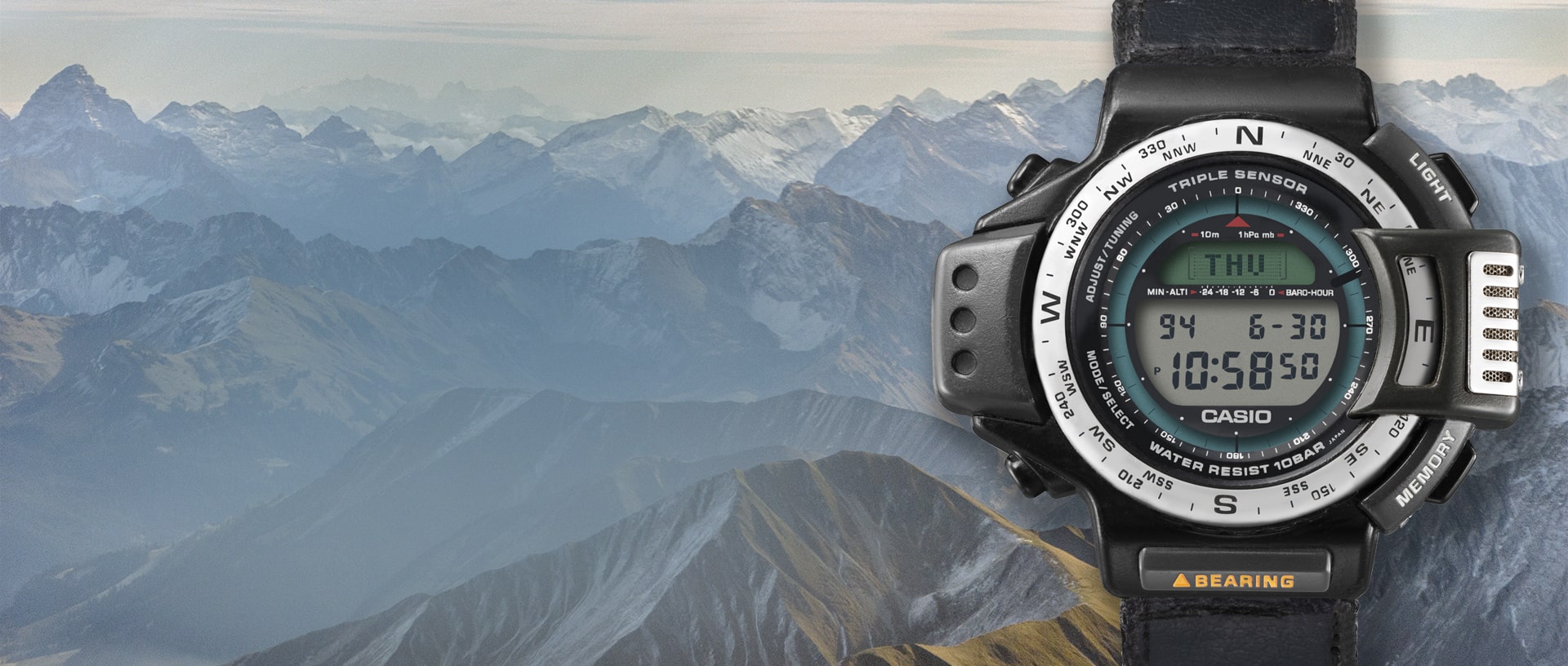


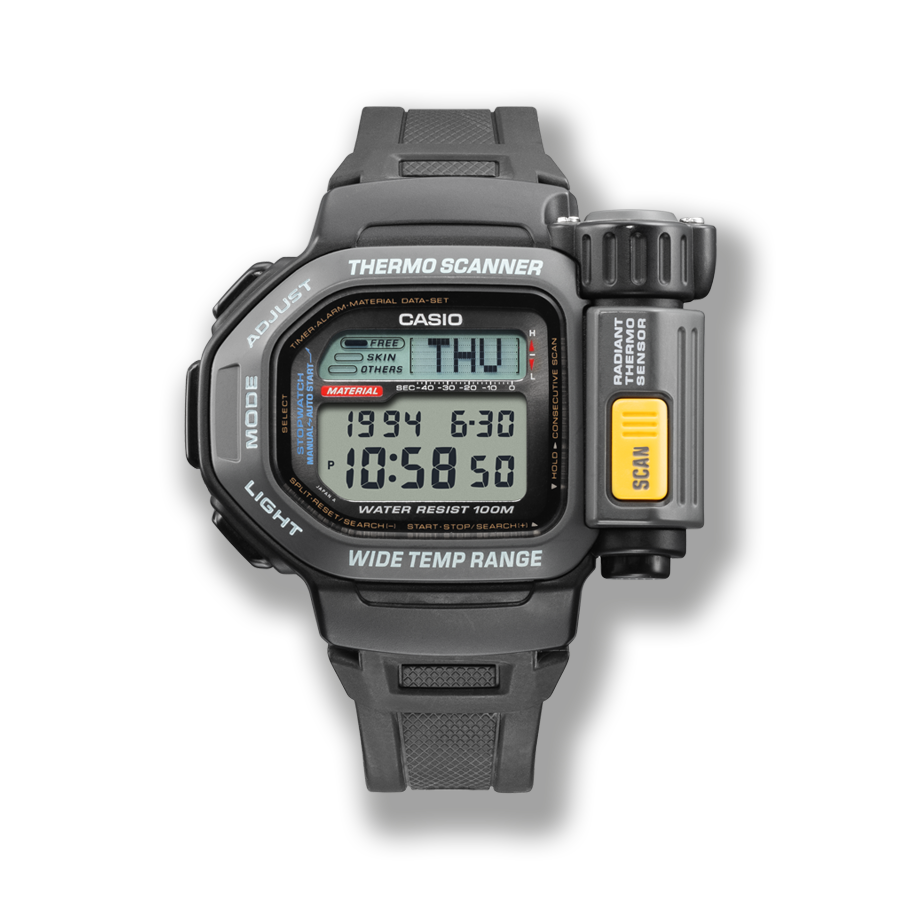
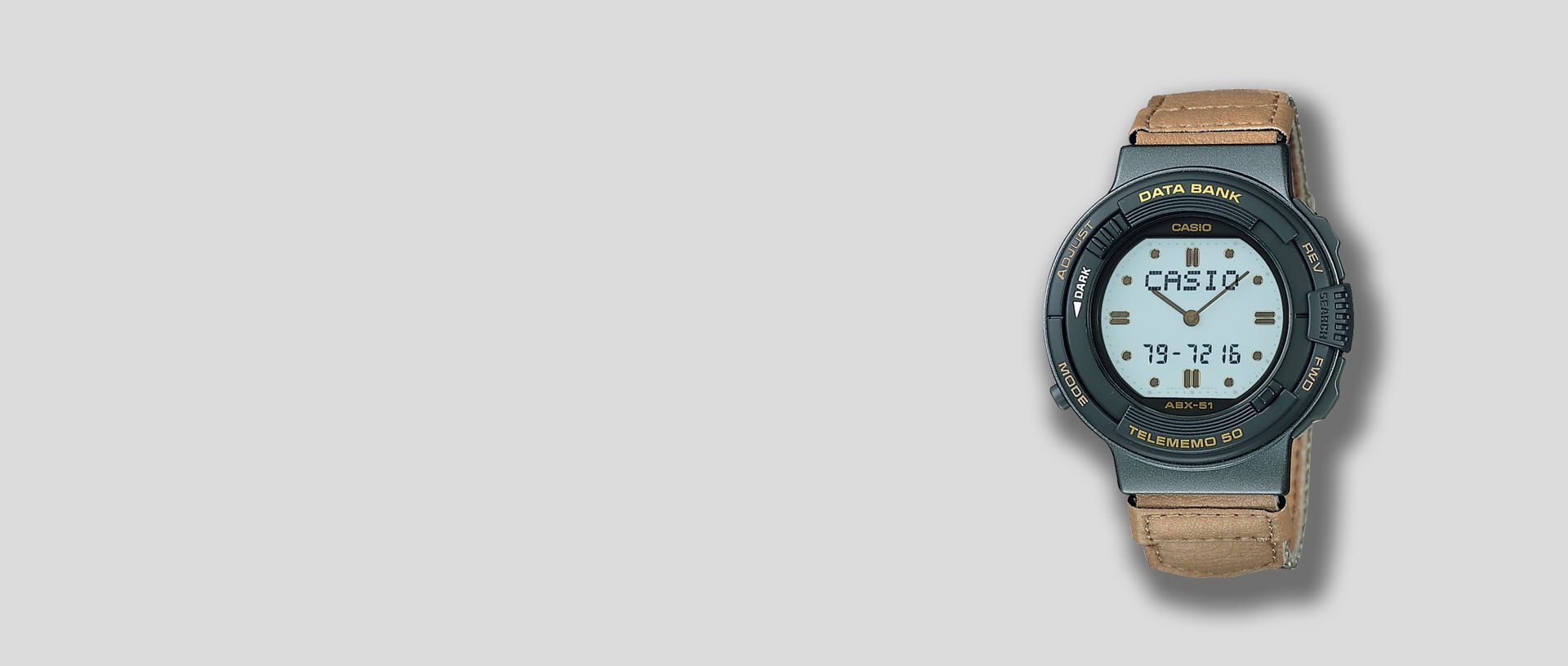








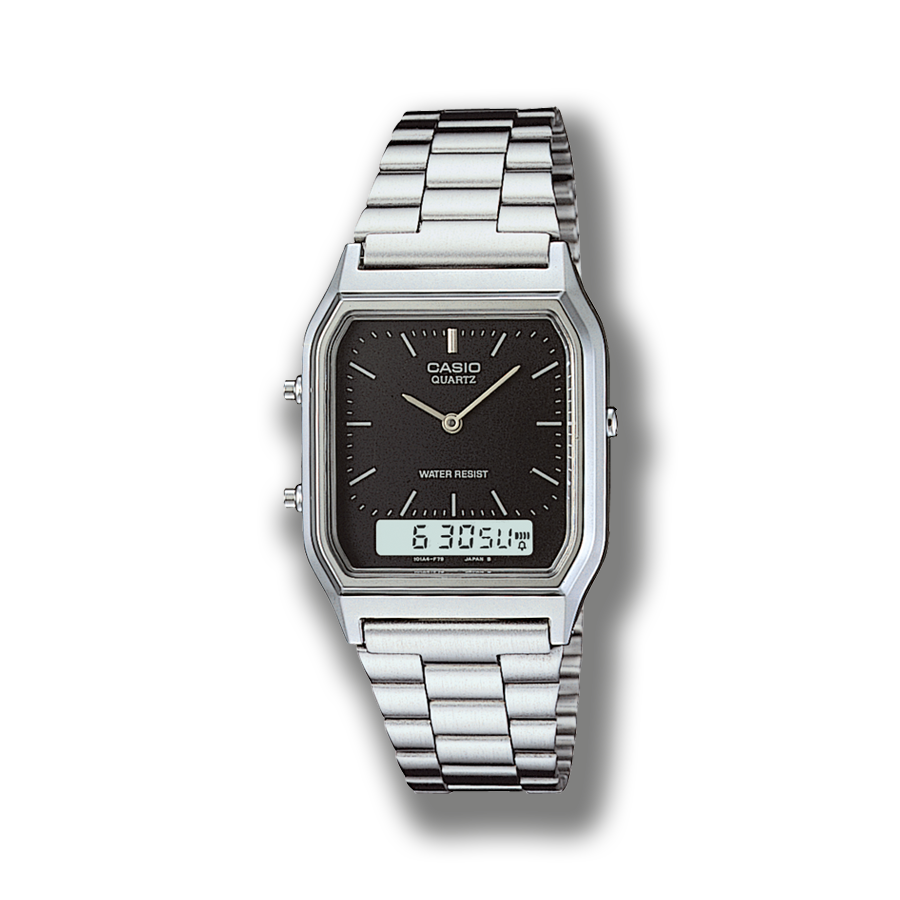

















Validate your login